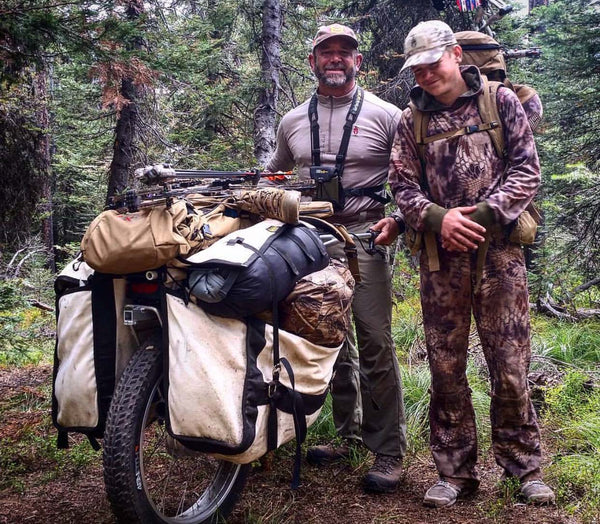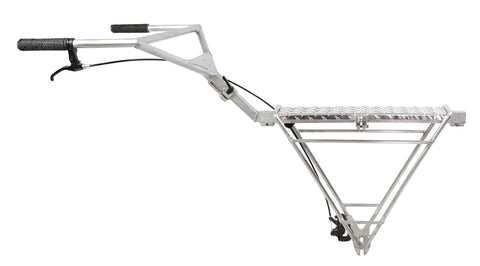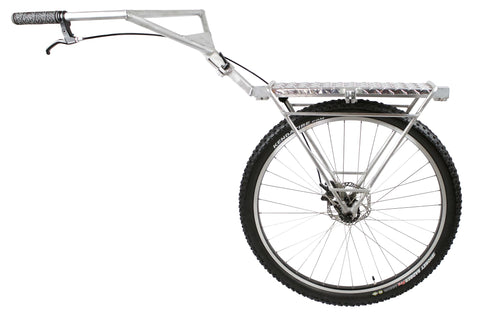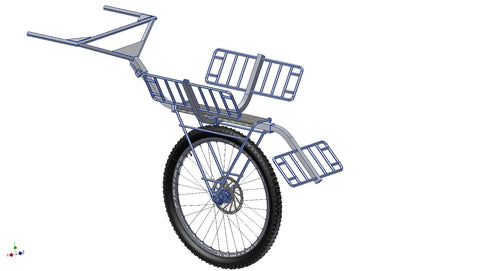Game Cart Use in Wilderness | Is it Allowed?
Does the Wilderness Act Prohibit the Game Cart?

Photo courtesy of Russ Meyer at GotHunts.com
In the mid-20th century, the Wilderness Society’s Howard Zahniser became a champion for the American wilderness and began fighting for national protection of these areas. He wanted to preserve these areas for future generations to experience and enjoy, and he set about doing that by writing the Wilderness Act of 1964.
Howard Zahniser spent nearly a decade drafting, revising, and lobbying for the protections afforded under the Wilderness Act of 1964. As the executive director of the Wilderness Society, he knew the need to protect our nation’s wild areas was urgent and great. In September 1964, just a few months after Zahniser’s death, the Wilderness Act he had written was finally signed into law.
The Wilderness Act was written for the protection and conservation of wilderness areas, which are appreciated by all those in the outdoor sports communities. Most hunters, hikers, and other outdoor enthusiasts work hard to obey the letter and spirit of the Wilderness Act. However, certain parts of theWilderness Act have become outdated in the past fifty years, including the stance the Wilderness Act takes on a hunter’s use of a game cart or hunting cart.
With the passage of the Americans with Disabilities Act in 1990, questions began to arise regarding the use of certain motorized equipment and mechanical transport within the wilderness areas. The United States Forest Service released case guidelines to help wilderness managers make decisions regarding the use of these tools in wilderness areas that would adhere to the Wilderness Act and the Americans with Disabilities Act. In one case, a guideline confirmed the use of battery-powered carts for mobility within wilderness areas; however, it disapproved the use of a deer cart for hunters with disabilities.
According to decision makers, a motorized hunting cart or multi-wheeled cart would be too destructive to the land, so they are not allowed according to the Wilderness Act. Thankfully, advances have been made in the structure of game carts and they are now more environmentally friendly and easier to use so they can be manned by a single person.
The Honey Badger Wheel is a single-wheeled cart that can be folded up and worn into the hunting area on a backpack, so it doesn’t have to be wheeled in. This design cuts down on the amount of time the wheel is actually on the ground. Furthermore, if being used to hike in, it is less impact on trails compared to pack animals. The Honey Badger Wheel weighs less than fourteen pounds, so the impact on the user and the forest floor is light.
Obviously, the best intentions behind the Wilderness Act did not consider the future value and efficiency of the Honey Badger Wheel at a time when bicycles wheels were considered “mechanical transport” and banned from use in the wilderness areas.
This misrepresentation of the Honey Badger Wheel is a perfect example of how archaic portions of the Wilderness Act are. The inclusion of the Honey Badger Wheel into wilderness areas would be an asset to all hunters and hikers, especially those with disabilities. The Honey Badger Wheel’s simple design, efficient handling, and minimal environmental impact make it the premier game cart for protected wilderness areas. Perhaps fifty years is long enough to withstand the vague language found in the “Prohibitions” section of the Wilderness Act. It’s time for the language of the Wilderness Act to catch up with the technology of today’s outdoorsmen.














